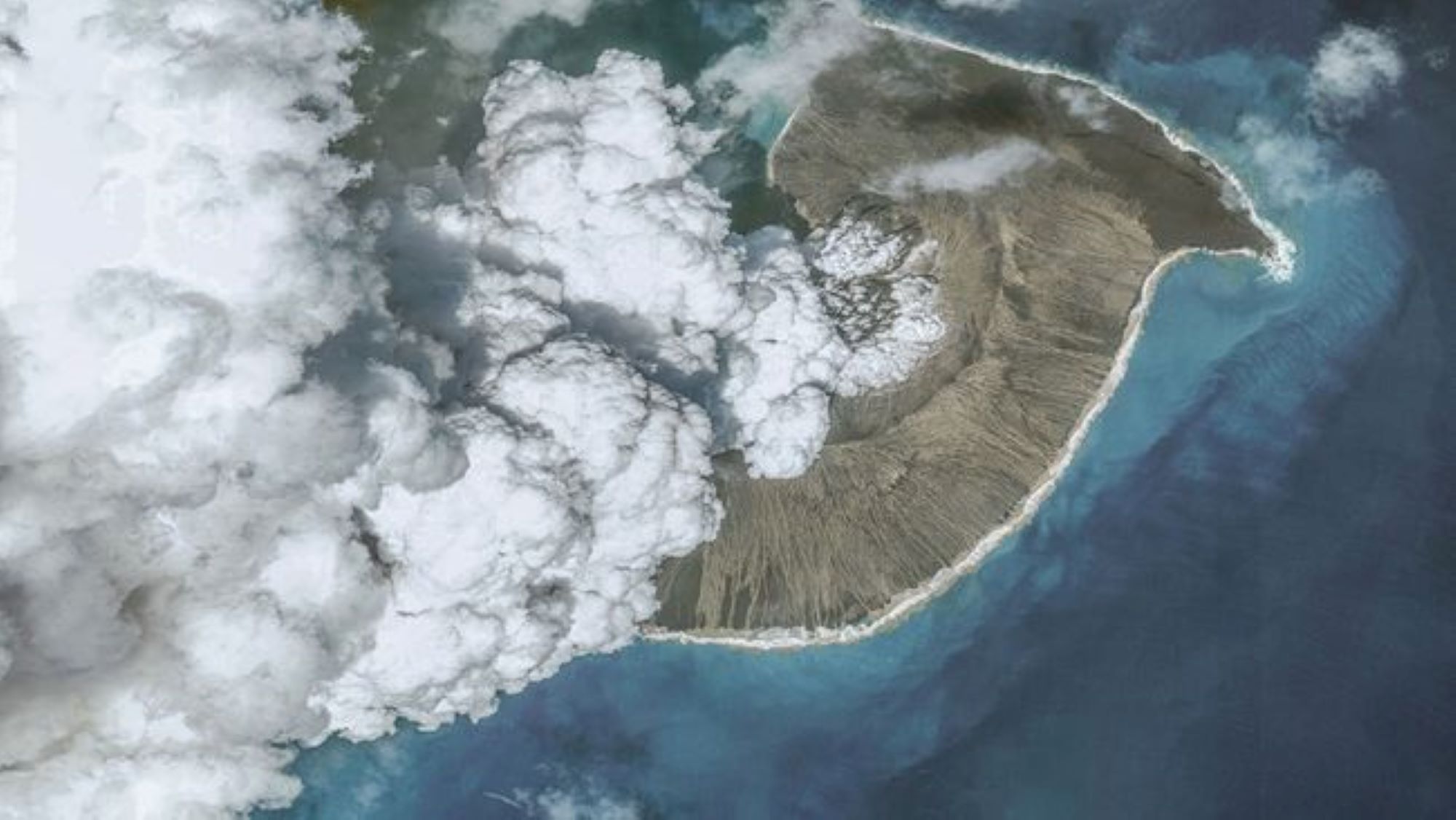
Almost two years after a humongous eruption rocked Tonga's Hunga volcano in the southwest Pacific Ocean, scientists have finally mapped the huge magma plumbing system that gave birth to the record-breaking blast.
On Jan. 15, 2022, a volcano beneath the island of Hunga Tonga-Hunga Ha'apai exploded with such force it triggered the most intense lightning storm ever recorded and the first documented mega tsunami since antiquity. The eruption was felt worldwide, but the volcano's underwater setting posed a challenge for scientists trying to understand how such a violent blast occurred.
Now, in a study published Dec. 15 in the journal Science Advances, researchers have mapped slight variations in the pull of gravity in waters around the island before and after the eruption and found the explosion was likely fed by two magma chambers that merged.
"I was happily surprised that we can indeed image a relatively large magmatic system using this kind of dataset and method," said lead author Hélène Le Mével, a volcanologist and staff scientist at the Carnegie Institution for Science in Washington D.C. This kind of work "is rarely done to study submarine volcanoes," Le Mével told Live Science in an email.
Related: Did the Tonga eruption cause this year's extreme heat?
The magma reservoirs sit at different depths between 6,600 and 33,000 feet (2 and 10 kilometers) under the volcano and likely stored a high proportion of liquid magma before the 2022 eruption, according to the study.

The researchers found that the blast ejected roughly 30% of the magma — more than 2.1 cubic miles (9 cubic kilometers) — from a shallow central chamber, which caused the roof of the volcano to cave in and form a 2,800-foot-deep (850 meters) bowl-like depression called a caldera. As the pressure in the central reservoir dropped following the explosion, magma stored in a deeper reservoir to the north may have burst through the crust and replenished the central reservoir, opening up a channel between the two chambers. It's also possible that magma from a gas-rich source deeper within Earth's crust rose to the central chamber, which "may also explain the violence of the 2022 eruption," according to the study.
A third pocket of magma, located to the northwest of the central chamber, seems disconnected from the system and might represent "an older, solidifying mush zone," the authors wrote.
Up to 6.2 cubic miles (26 cubic km) of eruptible magma could still lurk in the two main reservoirs beneath the Hunga volcano, according to the study — enough to fill 10 million Olympic-size swimming pools. (Eruptible magma is defined as magma that is over 50% melt and low in crystal solids.)
While the study revealed what fueled the volcano, it couldn't show what triggered the massive eruption. "By themselves the gravity results wouldn't directly allow us to conclude on the eruption trigger," Le Mével said, but they give researchers "an idea of where and how much magma could be stored under the volcano."
The findings may also be limited because they used satellite data that may have been affected by ocean waves and changes in gravity from the seafloor to the sea surface, the researchers noted in the study.
"We only have information about what changed over a one year interval so we cannot say specifically what happened during the eruption," Le Mével said. But the data suggest "new pathways between reservoirs were created," she added.
It's been 900 years since an eruption of this scale last shook the island, Le Mével said, but smaller eruptions occur more frequently. A previous eruption in 2015 birthed a cone of land connecting two islands, Hunga Tonga and Hunga Ha'apai, which form the only visible part of the 6,600-foot-tall (2,000 m) volcano. The giant 2022 eruption destroyed the cone and reduced the subaerial Hunga Tonga-Hunga Ha'apai edifice to two thin slivers of land.







